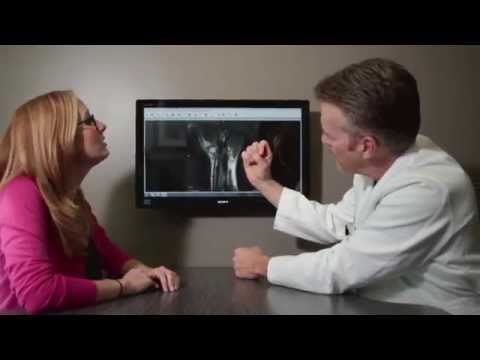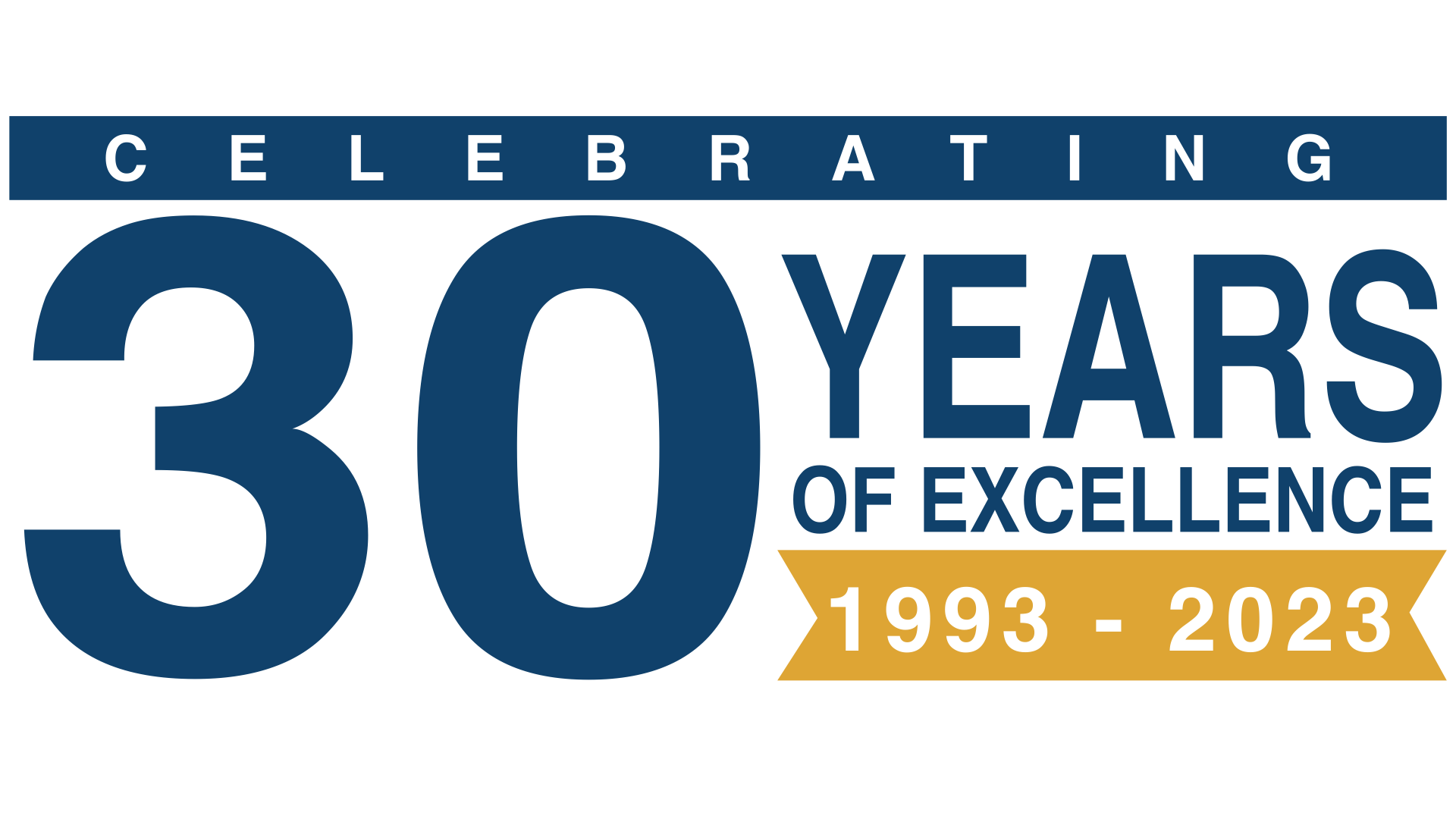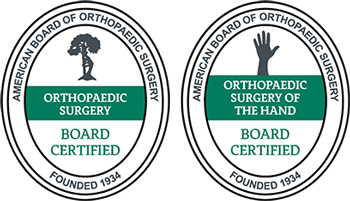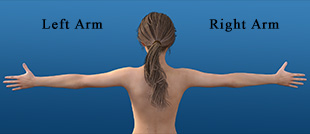Texting and Typing: Common Hand and Wrist Injuries

Technology dominates today’s world. From our phones to our TVs to our computers, we spend significant time in front of a screen each day, often texting or typing at the same time. In fact, according to Rush University, the average American spends around 23 hours per week texting! With the rise of these devices, concerns have emerged over their prolonged effects on hand and wrist health.
Contents
How Texting and Typing Affect the Hand and Wrist
Texting, typing, swiping, and scrolling all create repetitive stress on the hand and wrist – similar to sports like golf or baseball. Despite their gentler nature, the consistency of these technological motions adds up, leading to inflammation in joints and along tendons. Over time, this wear and tear can cause pain, swelling, and reduced mobility.
This all said, it should be noted that the relationship between chronic cell phone use and hand and wrist injuries is not fully understood. Most evidence is anecdotal (even if compelling) – patients complaining of new pain or worsening pain with increased technology use – and larger scale studies are needed to establish a causal relationship between the two.
Common Injuries
De Quervain’s Tenosynovitis
Also known as “mommy’s thumb” or “texting thumb,” De Quervain’s tendinosis refers to a swelling of the tendons around the base of the thumb. Anatomically, these tendons are covered by a slippery layer of tissue that can become irritated with repetitive strain (such as lifting a baby), causing friction and pain with thumb and wrist movements.
An easy way to diagnose De Quervain’s syndrome is using the Finkelstein test. Starting with a thumb’s up sign, tuck your thumb into your wrapped fingers and hold it tight. Then, bend your wrist down, stretching out the thumb side of your wrist – if you feel pain on the outside of the wrist, then you may have De Quervain’s tenosynovitis.
Treatment can be either non-surgical – consisting of immobilization of the wrist in a splint, over the counter pain medication, and physical therapy/stretching – or surgical. Surgery consists of cutting open the tendon sheaths, reducing friction and giving tendons space to heal.
Trigger Finger
Trigger finger is when a digit becomes consistently locked or catches while bending or straightening. It is often accompanied by a click or pop with every movement. The ring finger and thumb are most commonly effected, though the exact causes are not well known apart from forceful or repetitive hand injury.
The tendons of the fingers are held closely to the bones by a series of tissues called “pulleys.” When the finger is bent, the tendon must pass through these pulleys. When a pulley becomes inflamed, the tendon may have difficulty gliding through, in turn causing inflammation of the tendon and creating a small lump. It is this small lump that can catch on the pulley, causing the jerking motion, popping, and pain associated with trigger finger.
Diagnosis is usually straightforward, as the jerking motion associated with trigger finger is quite conspicuous. The doctor may also check for the small lump on the tendon as well as inflammation around the finger. The most conservative treatments consist of wrist, splinting, stretches, and medication. If those are unsuccessful, steroid injections can be used to reduce inflammation and resolve the lump. Finally, surgery to cut the affected pulley and allow for smooth movement is also an option.
Cubital and Carpal Tunnel Syndrome
Pressure or stretching of the ulnar nerve of the arm (also known as the funny bone nerve), is known as cubital tunnel syndrome, or “cell phone elbow.” Symptoms include numbness or tingling (“pins and needles”) in the ring and pinky fingers as well as pain and weakness. All of these stem from compression of the nerve, which can occur when bending the elbow at an acute angle (e.g., holding the phone to your ear for extended periods).
Diagnosis is sometimes assisted by electrical conduction tests, which exam a nerve’s ability to transmit an electrical signal. In the case of cubital tunnel syndrome, this transmission is impaired. Once diagnosed, treatment options range from rest, to splinting, to surgery, in which structures that are placing pressure on the nerve may be removed, or the nerve may be moved to a safer location.
Carpal tunnel syndrome – a similarly named and common condition – is similar to cubital tunnel syndrome, but refers to pressure on the median nerve, which connects to the thumb, index, and middle fingers of the hand. It has also been associated with excessive texting and typing. For more information on this injury, see our recent blog posts on common hand and wrist injuries in the kitchen and a new study out of Harvard on carpal tunnel risk factors.
Other Possible Injuries
The list above is certainly not exhaustive; it is meant to point out some of the more unique injuries linked to typing and texting. However, many of the most common hand and wrist injuries – e.g., arthritis and tendonitis – have also been associated with texting and typing, as have conditions of the neck and shoulder.
With regards to the hand and wrist, be sure to check out our unique Where Does it Hurt?® tool, which can help you narrow down your potential injury and lead you to helpful resources. Of course, you should see a medical provider before making any treatment decisions.
Tips for Prevention
Some tips to prevent hand and wrist injuries in our technological world:
- Use headphones or a headset for long calls, instead of holding your elbow at an acute angle. This will reduce pressure on the ulnar nerve and risk of cubital tunnel syndrome.
- Use voice-to-text to send messages. The less time spent typing, the less stress put on the fingers, hand, and wrist.
- Stretch your wrist. If you ran every day, all day, you’d need to constantly stretch your legs to prevent injury. The same goes for the hand and wrist, which are under constant stress with typing and texting.
- Remember RICE: Rest, Ice, Compression, Elevation. A good strategy for the initial stages of any injury, hand and wrist overuse injuries being no exception.
- Use a brace. Whether you have thumb, wrist, or finger pain, there are many braces that can provide support and aid in healing.
- Physical therapy. If your injury progresses, your doctor may recommend physical therapy to regain strength and mobility.
- Hold your phone at eye level to reduce stress on the neck and shoulders. The same goes for your computer at your home or office – try to have the screen level with your eyes.
- Cut down on screen time. The benefits of this are manifold – psychological, physiological, and emotional. The best way to reduce any type of injury associated with technology is to reduce time using it, particularly superfluous time spent mindlessly scrolling. Most phones today have screen time tracking features, which you can use to set goals and make incremental improvements.
Citations
- Wysocki, R. (n.d.). When Technology Hurts – Thumb and Elbow Pain. Retrieved from https://www.rush.edu/health-wellness/discover-health/when-technology-hurts
- Wrist & Hand Repetitive Use Injuries (n.d.). Retrieved from https://nyulangone.org/conditions/wrist-hand-repetitive-use-injuries
- Obsessed with Your Phone? Tips for Elbow, Thumb, Neck Pain (March 20, 2017). Retrieved from https://health.clevelandclinic.org/obsessed-with-your-smartphone-5-tips-help-avoid-elbow-thumb-and-neck-pain/
- De Quervain’s Tendinosis (December 2013). Retrieved from https://orthoinfo.aaos.org/en/diseases–conditions/de-quervains-tendinosis
- Leversedge, F. and Rohde, R. (March 2018). Trigger Finger. Retrieved from https://orthoinfo.aaos.org/en/diseases–conditions/trigger-finger
- Cubital Tunnel Syndrome (2015). Retrieved from https://handcare.assh.org/Anatomy/Details-Page/ArticleID/27955/Cubital-Tunnel-Syndrome

























